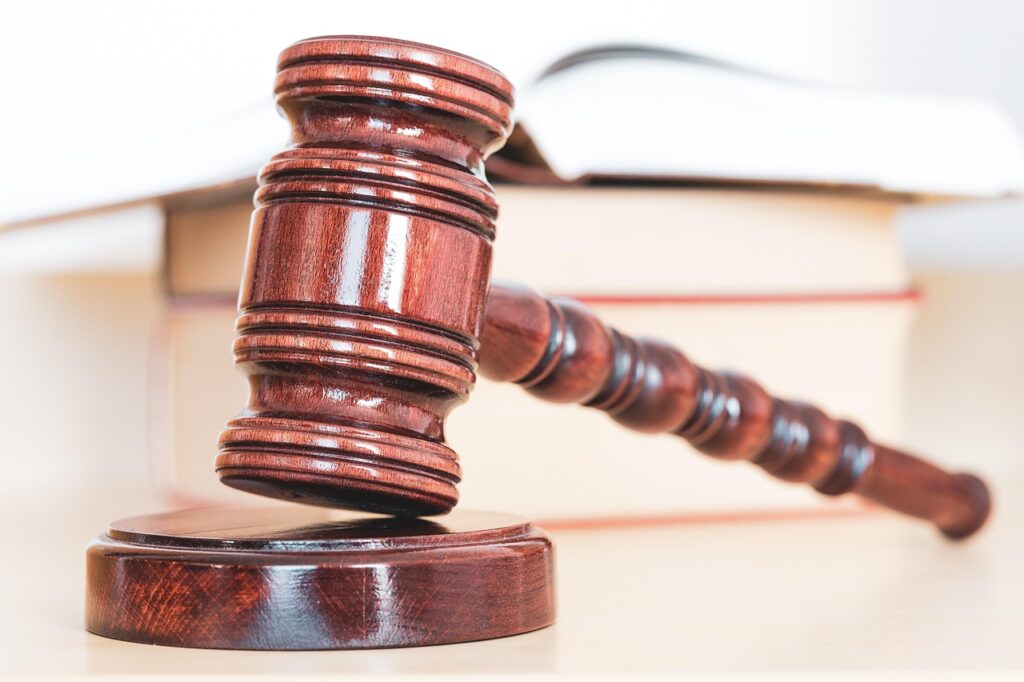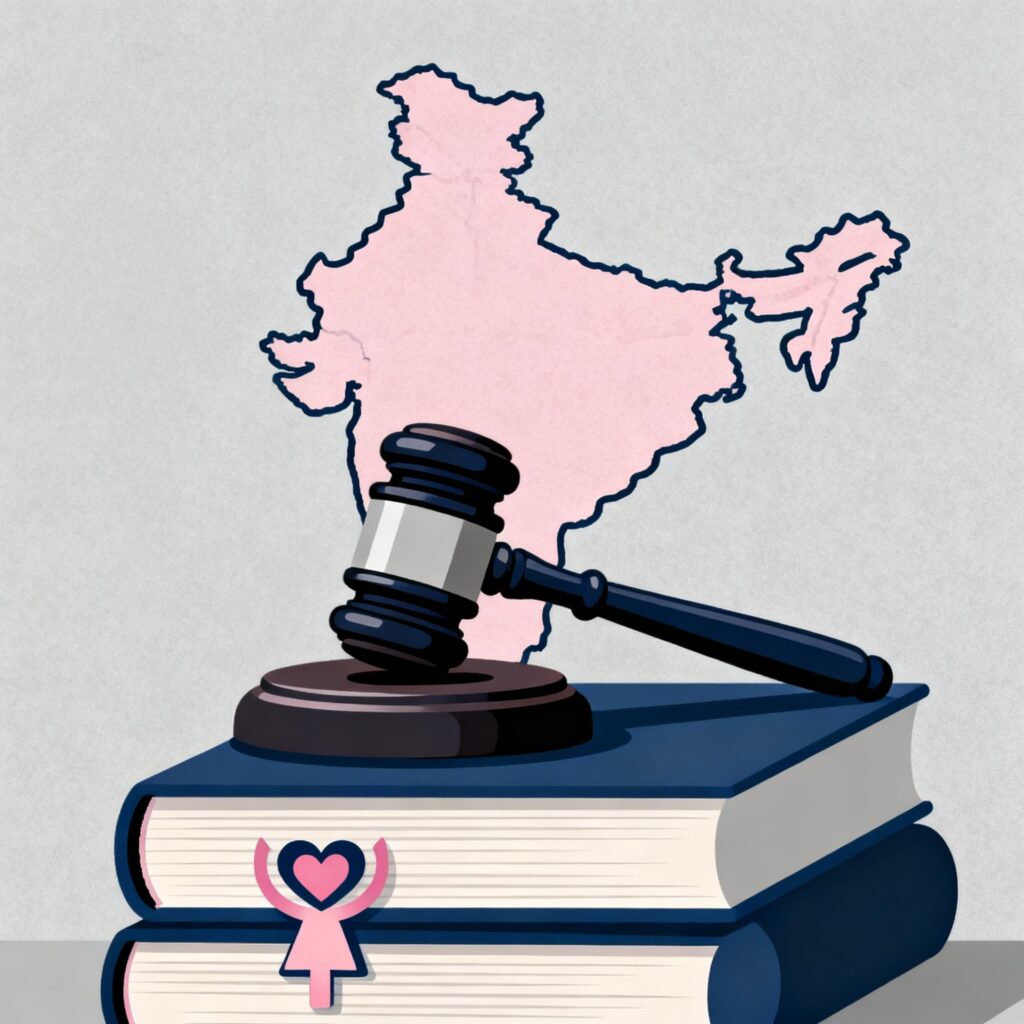Published On: October 13th 2025
Authored By: Nitya Ramachandran
Government Law College, Coimbatore
Affiliated to TNDALU
INTRODUCTION
The digital revolution has primarily changed the way creative content is produced, distributed, and consumed. With the rapid expansion of the internet, artistic works—books, music, films, software, photographs—are read, listened to, viewed or played around the world, in seconds. While this increases the possibilities for creative expression and audiences for the works, it equally increases the opportunities for copyright infringement. These advancements have also opened the door to copyright infringement greater than ever. The speed, capacity, and malleability of digital technologies and content are a challenge unmatched with the pace of change in relevant laws and enforcement and create its own issues for rights holders, regulators and intermediaries. Works that were previously limited distribution can now be reproduced, distributed, and repurposed virtually without limitation, resulting in complicated legal and enforcement issues. The current digital space imposes a need for re-evaluation and re-conceptualizing of traditional copyright law, along with the development of new legal and technological methodologies for protection of creative expression in an interconnected world.
LEGAL FRAMEWORK OF COPYRIGHT IN THE DIGITAL ERA
Under the Indian Legal System
Copyright enables creators to control their works exclusively, and prohibits any re-production, adaptation or distribution without permission. In India, the copyright law is governed by the Copyright Act of 1957, which has been amended several times (including in 2012 to address digital realities)[1]. The Copyright Act and the Information Technology Act, 2000 (IT Act) govern digital copyright matters in India.
Section 14[2] of the Copyright Act details the exclusive rights conferred. The definition states that, “copyright” refers to the “exclusive right to do or authorise the doing of any of the acts” specified in the section. The acts are in respect to a literary, dramatic or musical work, computer programme, artistic work, cinematograph film, and sound recording. Enhanced penal provisions for digital offender and licensing provisions were introduced in the 2012 amendment to the Act.
The IT Act, 2000, notably Section 79[3], addresses intermediary liability—setting the conditions for when online platforms (for example, social media) are responsible for third-party copyright infringement. This section, in particular, has gained immense attention in recent days, with regards to the state’s oversight.
International Treaties and Cross-Border Issues
With digital infringement often crossing national boundaries, frameworks such as the WIPO Copyright Treaty (WCT) and the Agreement on Trade-Related Aspects of Intellectual Property Rights (TRIPS Agreement) set international standards on copyrights.
The WCT is a “special agreement under the Berne Convention, dealing with protection of works and rights of their authors in the digital environment”. The Treaty also deals with two specific rights – Computer programs and Compilations of data or other materials[4]. The TRIPS Agreement also provides provisions that mandate member states to treat other member nations no less favourable than its own nationals in respect to IP laws[5].
However, enforcement of these legal frameworks in practice is complicated due to the distributed and borderless nature of online piracy handling and dynamic strength of copyright protection across different jurisdictions.
THE NATURE AND SCALE OF DIGITAL COPYRIGHT INFRINGEMENT
Growth in digital technology has facilitated both creation and infringement. The most common forms of copyright infringement include—
- Online piracy: Peer-to-peer networks, torrents, cyber lockers, and illicit streaming sites of works of others.
- Unauthorized adaptation and remixing: Social media culture makes it difficult to establish lines between fair use and outright infringement.
- Anonymous infringement: Technologies such as VPNs, the dark web, and proxy servers make identifying infringers challenging[6].
These developments have decreased revenues for content industries (films, music, and publishing), undermined creators’ rights, and, paradoxically, sometimes increased exposure for artists through viral dissemination. It is reported that illegal streaming affecting privacy accounted for 24% of global internet traffic in 2016[7].
CORE CHALLENGES IN DIGITAL COPYRIGHT ENFORCEMENT
Jurisdictional Complexity
Most of the digital infringement occurs on a cross- border basis. This makes enforcement and prosecution of copyright infringement difficult. Content servers are often located in countries with weak enforcement, limiting the reach of domestic laws.
If copyright is being infringed in a foreign territory and the conventions are available, the copyright owner is treated as a national of the foreign territory. The work is protected by the copyright laws of that foreign territory and the copyright owner can bring proceedings for copyright infringement. This is known as the principle of ‘national treatment’[8]. But these suits of foreign jurisdiction often involve different laws, languages and procedures.
Intermediary Liability and “Safe Harbour”
The IT Act, Section 79[9] provides for “safe harbour” granting social media intermediaries the immunity for user-generated content, unless notified of infringement. Upon non-compliance, the intermediaries will lose their safe harbour under Rule 7 of the IT (Intermediary Guidelines and Digital Media Ethics Code) Rules, 2021[10]. This was challenged by a comedian and political starist Kunal Kamra. It was claimed that the “fact-check” unit enforced by the union government in the IT Rules, 2023[11] was against the provisions of the IT Act[12]. This imposes serious concerns over enforcement of laws restricting illegal contents over the net.
Technical Barriers
Unlike physical infringement, digital copyright violations are often anonymous and use encryption, proxies, and decentralized networks to hide the identity of the perpetrator. Also, the tendency of the courts in many jurisdictions to have a significant delay slows the judicial process, provides infringing content to be distributed before such material is taken down.
Lack of Awareness and Weak Compliance
Many internet users, especially in developing countries like India, are not often aware of copyright laws available in the country. Moreover, enforcement agencies also contribute to challenges in implementing these laws as they are not spontaneously dynamic to deal with these new forms of infringement.
REMEDIES FOR COPYRIGHT INFRINGEMENT: LEGAL AND TECHNOLOGICAL
A. LEGAL REMEDIES
Copyright holders can get remedied with both civil and criminal actions under the Copyright Act.
1. Civil Remedies
The Copyright Act, 1957, provides with various civil remedies against wrongdoers, under Section 55[13] which are-
- Damages,
- Injunction,
- Accounts of profit,
- Any other remedies conferred by law.
These are general civil remedies, including the right to have the profits earned from the wrongdoer that was earned from using contents of the right-holder. Accounts of profit is an alternative to damages[14].
Under Section 58 of the Act, the copyright owner can recover possession of his infringed copies and plates from the infringer, duly through proceedings in court[15].
2. Criminal Remedies
Section 63 deals with criminal remedy available to the copyright holder. Under the section, offenders are punished with six months to three years imprisonment and fine fifty thousand rupees to three lakh rupees.
For further commissions of the act and using information with knowledge of its prior existence can lead to enhanced punishments as provided under Section 63A and 63B, respectively. The infringed copies are liable to be seized by the police without warrant[16].
B. TECHNOLOGICAL SOLUTIONS
1. Digital Rights Management (DRM)
Digital rights management (DRM) is method of using technology to control, restrict access to copyrighted materials over the internet. This means to restrict unauthorised usages or limiting the number of devices that can use a particular product, by code. This is done through encryption, watermarking, or access controls used by online entertainment industry. However, DRMs also have their own disadvantages. It can degrade user experience if the restrictions are higher. There are new technologies that even allow encroachers to pass through these codes. Also, it is not considered a cost-effective way to protect data online[17].
2. Blockchain and Smart Contracts
Smart contracts, as the name suggests, are new technology contracts that are created in code between parties. Their conditions are entered in the form of code, which then executes the contract. The code and the agreements contained therein exist across a distributed, decentralized blockchain network. Transactions are trackable and irreversible, and the code controls the execution[18].
These are widely used due to its advantages such as accuracy and immutability. Since these are pre-written codes, it cannot be wrongfully altered, nor can it contain human errors. But even these codes are found to be editable by hackers[19].
3. Automated Content Monitoring
Automated content monitoring has become an essential tool used to identify unauthorised uses copyrighted materials in the digital platform. It is also known as the Copyright bots or the Content Recognition Software[20]. These are the Artificial Intelligence mechanisms to detect usage of works previously done by someone who holds the rights for their content and material. These systems use algorithms to detect unauthorised use by scanning materials and comparing it against an extensive database of copyrighted works that the rights holders choose to supply.
Disadvantages of this technology are that it can sometimes be over-blocking or under-blocking users upon what was given to it as code. This requires manual human review to lessen such errors.
KEY JUDICIAL DECISIONS AND THE EVOLUTION OF LEGAL DOCTRINE
The Indian judiciary have played an important role in determining rights and dynamic interpretation of copyrights law, meeting the requirements of changing digital age. Below are some landmark cases regarding copyrights infringement—
MySpace Inc. v. Super Cassettes Industries Ltd. (2016)[21]
The case involved intermediary liability in copyright violation incidents[22]. The court held that “safe harbour” under the IT Act, 2000 and Section 51 of the Copyright Act has to be dealt harmoniously. Mere precautions or hosting does not amount liability unless there is actual knowledge of infringing content.
Shreya Singhal v. Union of India (2015)[23]
In this case, constitutional validity of Section 66A, 69A and 79 of the IT Act was questioned. The Supreme Court held by striking down the provision as violative of fundamental rights (right to freedom of speech and expression) and stating that the provision included vague terms. However, validity of Section 69A was upheld[24].
Sony Music Entertainment India Pvt. Ltd. v. Tamil Rockers (2019)[25]
The case concerned a piracy web site Tamil Rockers, which was distributing music and films owned by Sony Music illegally. The Court made a significant decision to issue an injunction, instructing internet service providers (ISPs) to block access to the Tamil Rockers website, which provided a significant barrier to online piracy. The decision displayed a judicially activated response to online copyright infringement and the adoption of dynamic blocking orders designed to mitigate continuous and widespread unauthorized distribution of protected content on the internet.
POLICY RECOMMENDATIONS
Strengthen Legal Frameworks
Laws on copyright infringement can be amended to provide precise and explicit provisions for digital copyrights. Vagueness of terms is one of the causes of lag in monitoring and penalising infringements. Amendments of these laws are also important to ensure they are matched with the dynamic environment with present-day technologies and industrial needs.
Build Enforcement Capacity
Cybercrime units can be established and trained to constantly monitor and enforce intellectual property rights. Copyrights holders are to be supported in accessing the legal remedies, especially small and emerging creators.
Encourage Industry Collaboration
Both private and public industries collaboration can build a strong field for technology oversight. Licensing policies are to be relaxed to encourage further creations and collaborations.
Enhance Awareness and Education
Investing in public education to create awareness on digital rights, responsibilities, penalties, etc., can contribute to reducing copyright infringements to a considerable extent. This can be done mainly aiming content creators and its users.
International Efforts
Countries can join international efforts for fighting against digital copyright infringement by implementing those global agreements as national laws.
CONCLUSION
Copyright infringement in the digital era presents multifaceted challenges that require solution-oriented approaches blending legal, technological and policy strategies. While traditional legal remedies such as injunctions, damages and criminal sanctions remain essential to address copyright infringement, their functional effectiveness is becoming even more dependent on the context of fast-paced and borderless digital content distribution. Automated content monitoring and dynamic blocking orders have emerged as essential tools for rights holders to combat mass-scale infringement and empower them to manage the unauthorized use of their works more efficiently. Landmark legal cases in India reflect the evolving recognition of digital rights by courts and the attempts to balance the need to protect copyright with the fundamental freedoms and rights of the public. Moving forward, both domestic innovation and international cooperation will be necessary to develop, support and maintain adequate legal frameworks and technological safeguards to protect creator’s interests while continuing to maintain the openness and access.
REFERENCES
[1] Suchain Pahal, Copyright Infringement In The Digital Age: Challenges And Solutions, 12 TIJER 5 (2025).
[2] The Copyright Act, 1957, §14.
[3] The Information Technology Act, 1957, §79.
[4] WIPO, Summary of the WIPO Copyright Treaty (WCT) (1996), WIPO (8/16/2025 12:10 PM), https://www.wipo.int/treaties/en/ip/wct/.
[5] Agreement On Trade-Related Aspects Of Intellectual Property Rights (15 April, 1994).
[6] Suchain Pahal, Copyright Infringement In The Digital Age: Challenges And Solutions, 12 TIJER 6 (2025).
[7] Esya Centre, Trends in Copyright Infringement and Enforcement in India (8/16/2025 12:59 PM), https://www.esyacentre.org/documents/2020/7/29/trends-in-copyright-infringement-and-enforcement-in-india.
[8] Squire Patton Boggs, International Aspects of Copyright (8/16/2025 01:17 PM), https://www.squirepattonboggs.com/~/media/files/insights/publications/2012/10/international-aspects-of-copyright/files/international-aspects-of-copyright-practice%20note/fileattachment/international-aspects-of-copyright-practice-note.pdf.
[9] Supra note 3.
[10] The Information Technology (Intermediary Guidelines and Digital Media Ethics Code) Rules, 2021, Rule 7.
[11] The Information Technology (Intermediary Guidelines and Digital Media Ethics Code) Rules, 2023, Rule 3.
[12] Supreme Court Observer, Challenge to the IT Rules (8/17/2025 1:39 PM), https://www.scobserver.in/cases/challenge-to-the-it-rules-2023/.
[13] The Copyright Act, 1957, §55.
[14] shrutisrivatsava1198, Infringement Remedied Under The Copyright Act, 1957 & The Trademarks Act, 1991, LegalDesire (8/18/2025 7:40 PM), https://legaldesire.com/remedies-to-infringement-of-the-copyright-act-1957-the-trademarks-act-1999/.
[15] The Copyright Act, 1957, §58.
[16] The Copyright Act, 1957, §63-64.
[17] Fortinet, Digital Rights Management (DRM), Fortinet (8/18/2025 6:38 PM), https://www.fortinet.com/resources/cyberglossary/digital-rights-management-drm.
[18] Utimaco, What is a Smart Contract in Blockchain, Utimaco (8/18/2025 6:58 PM), https://utimaco.com/service/knowledge-base/blockchain/what-smart-contract-blockchain#:~:text=Smart%20contracts%20are%20essentially%20programs,an%20intermediary%20or%20additional%20delay.
[19] The Investopedia Team, Smart Contracts on Blockchain: Definition, Functionality, and Applications, Investopedia (8/18/2025 6:54 PM), https://www.investopedia.com/terms/s/smart-contracts.asp.
[20] Pillsbury Winthrop Shaw Pittman, Sam E. Iverson, The Rise of the Copyright Bots, JDSUPRA (8/18/2025 7:22 PM), https://www.jdsupra.com/legalnews/the-rise-of-the-copyright-bots-54133/.
[21] My Space Inc. v. Super Cassettes Industries Ltd. (2017) 236 DLT 478 (DB).
[22] The Cyber Blog India, Myspace Inc. v. Super Cassettes Industries Ltd., Cyber Blog India (8/19/2025 6:42 PM), https://cyberblogindia.in/myspace-inc-v-super-cassettes-industries-ltd/.
[23] Shreya Shingal v. Union of India AIR 2015 SC 1523.
[24] Manupatra Academy, Shreya Shingal v. Union of India (UOI) (8/19/2025 7:19 PM), http://www.manupatracademy.com/legalpost/manu-sc-0329-2015.
[25] Abdul Quddos, Sony Music Entertainment India Private. Limited. V. Tamil Rockers, Indian Kanoon (8/19/2025 7:27 PM), https://indiankanoon.org/doc/147887320/.



